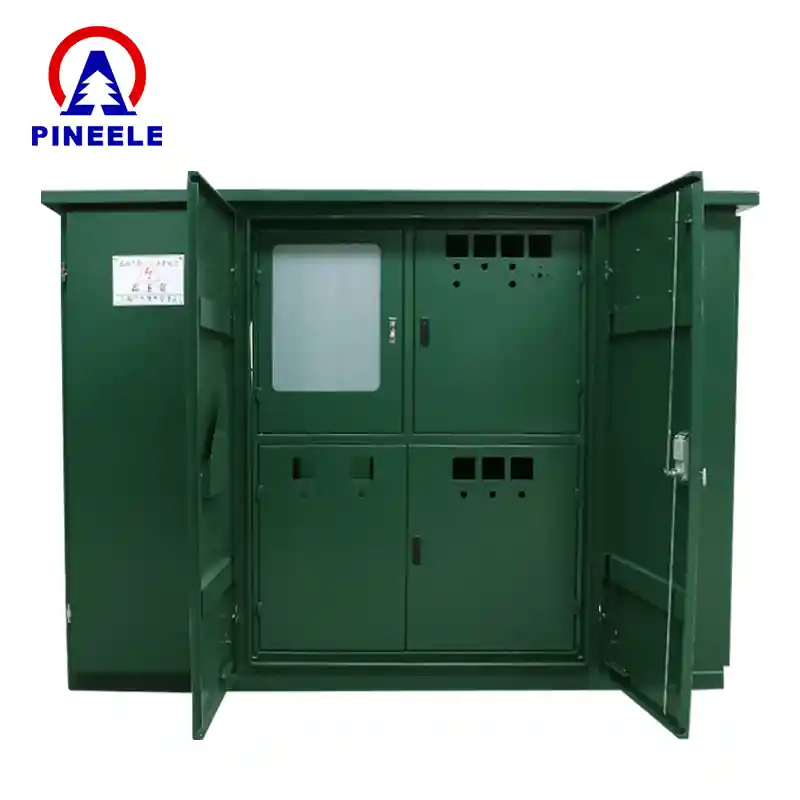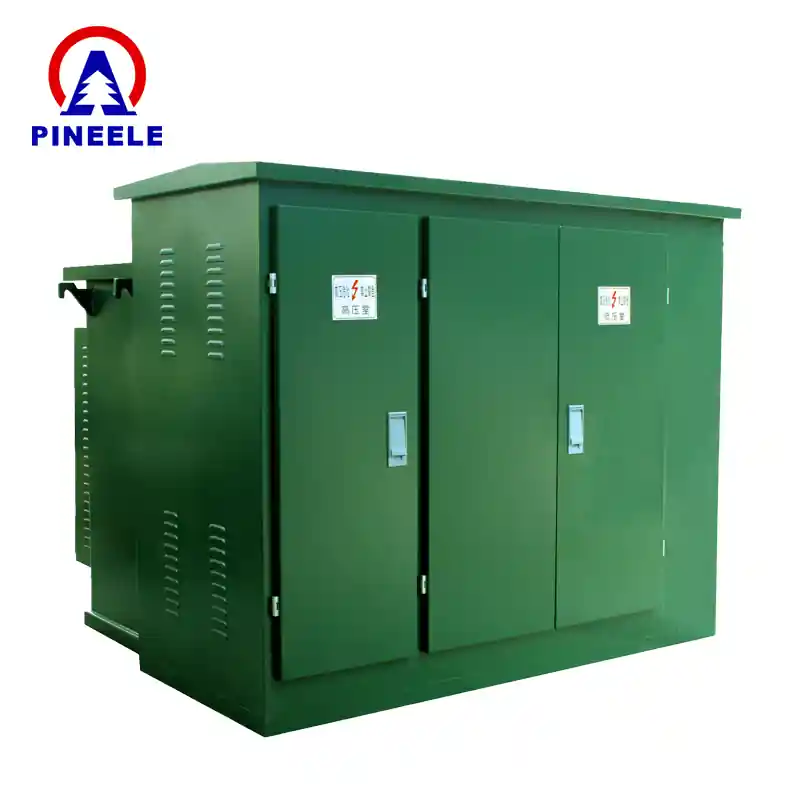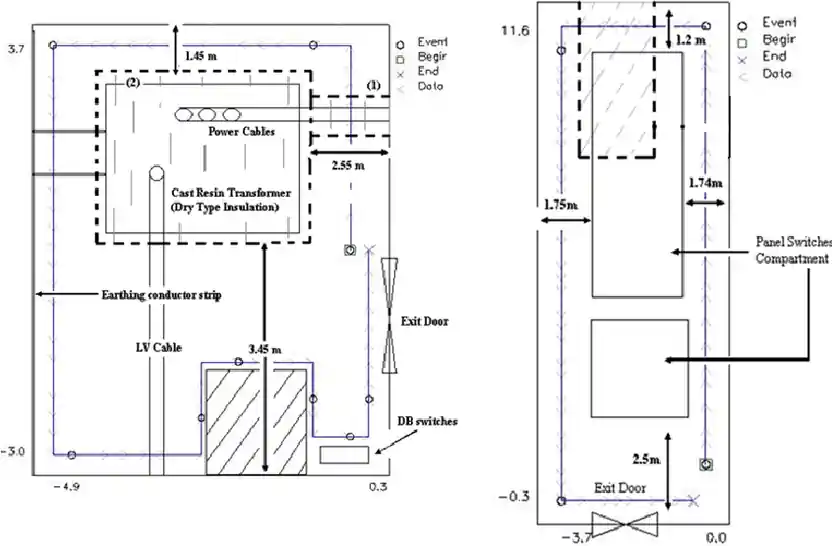
Úvod do rozvodny 220 kV
A 220 kV rozvodna je vysokonapěťové elektrické zařízení, které se používá pro přenos a distribuce elektrické energie o napětí 220 kilovoltů.. V rozvodné síti hraje klíčovou roli tím, že snižuje napětí z přenosové úrovně (často 400 kV nebo vyšší) na nižší napětí (např. 132 kV, 66 kV nebo 33 kV) pro další distribuci. Tato infrastruktura zajišťuje efektivní, spolehlivé a bezpečné dodávky elektřiny v rozsáhlých zeměpisných oblastech.
Aplikace a význam
Rozvodny 220 kV jsou nezbytné v:
- Vnitrostátní energetické sítě, zejména v zemích s rozsáhlou infrastrukturou.
- Průmyslové zóny vyžadující vysoké energetické zatížení.
- Městská centra kde je poptávka po elektřině trvale vysoká.
- Zařízení na výrobu energie z obnovitelných zdrojů, zejména solární a větrné elektrárny připojené k vysokonapěťové síti.

Tyto rozvodny zajišťují regulace napětí, izolace poruch, a bezpečnou dodávku energie, která podporuje kontinuitu provozu v průmyslových odvětvích a veřejných službách.
Trendy na trhu a souvislosti v odvětví
Podle Mezinárodní energetická agentura (IEA) a údaje z IEEMA (Indická asociace výrobců elektrotechniky a elektroniky), poptávka po vysokonapěťových rozvodnách, jako je 220 kV, roste z důvodu:
- Zvýšení integrace obnovitelných zdrojů energie.
- Rozšíření inteligentních sítí.
- Urbanizace a průmyslový růst v rozvojových regionech.
V roce 2024 přesáhly celosvětové investice do přenosové infrastruktury $300 miliard, přičemž rozvodny 220 kV významně přispívají k regionální stabilitě a vyrovnávání zátěže.
Technické specifikace
| Parametr | Typická hodnota |
|---|---|
| Jmenovité napětí | 220 kV |
| Jmenovitá frekvence | 50/60 Hz |
| Kapacita transformátoru | 100 MVA - 500 MVA |
| Konfigurace systému | Dvojitá přípojnice / Přerušovač a půl |
| Typ izolace | AIS (vzduchová izolace) / GIS (plynová izolace) |
| Jističe | SF6, vakuový nebo olejový typ |
| Systém ochrany | Reléová automatizace a SCADA |
| Schopnost odolávat poruchám | Až 40 kA po dobu 3 sekund |

AIS vs. GIS v rozvodnách 220 kV
Existují dva běžné typy rozvoden 220 kV:
- AIS (vzduchem izolovaná rozvodna):
Jako izolační médium se používá vzduch. Úsporná, snadno se udržuje, ale potřebuje více prostoru. - GIS (Plynem izolovaná rozvodna):
Používá Plyn SF6 pro izolaci. Kompaktní, odolný vůči povětrnostním vlivům, ideální pro městské oblasti s nedostatkem místa. Vyšší počáteční náklady, ale nižší nároky na údržbu.
Rozdíly oproti rozvodnám nižšího napětí
| Funkce | Rozvodna 220 kV | Rozvodna 132 kV / 66 kV |
|---|---|---|
| Úroveň napětí | Extra vysoké napětí | Vysoké napětí |
| Kapacita transformátoru | Vyšší | Střední |
| Poloha mřížky | Úroveň přenosu | Úroveň distribuce |
| Náklady | Vysoká | Střední |
| Footprint | Větší / kompaktní (GIS) | Menší |
Průvodce výběrem a rady pro nákup
Při výběru rozvodny 220 kV nebo jejích součástí je třeba vzít v úvahu:
- Poptávka po zatížení: Zvolte kapacitu na základě předpovědi špičkového a budoucího zatížení.
- Dostupnost prostoru: GIS používejte tam, kde je omezený počet pozemků.
- Podmínky prostředí: Prach, vlhkost, seismická aktivita mohou mít vliv na konstrukci.
- Automatizace a monitorování: Moderní rozvodny by měly podporovat řízení založené na SCADA a IoT.
- Dodržování předpisů: Zajistit normy jako IEC 62271, IEEE C37, a jsou dodrženy místní předpisy pro veřejné služby.
Renomovaní výrobci jako např. ABB, Siemens, Schneider Electrica PINEELE nabízí modulární řešení 220 kV odpovídající mezinárodním specifikacím.
Citování autoritativních zdrojů
- IEEE: Elektrické energetické systémy
- Řešení rozvoden 220 kV od ABB
- Wikipedia - Elektrická rozvodna
- Zprávy IEEMA
Sekce nejčastějších dotazů
Rozvodna 220 kV propojuje vysokonapěťová přenosová vedení s regionálními distribučními sítěmi a umožňuje transformaci napětí a ochranu systému.
Podstanice GIS šetří místo, jsou spolehlivější v náročných podmínkách a vyžadují méně údržby než systémy AIS.
220 kV pracuje na vyšší řešení napětí, zvládá větší zatížení a obvykle se používá v přenosové vrstvě sítě, zatímco 132 kV se používá spíše v dílčích přenosových nebo distribučních sítích.
Závěr
Na stránkách Rozvodna 220 kV je důležitou součástí moderní přenosové sítě. Zajišťuje, aby elektřina vyrobená v elektrárnách byla efektivně přenášena na velké vzdálenosti a následně odstupňována pro průmyslové nebo veřejné využití. Pochopení jeho konstrukce, použití a kritérií výběru je nezbytné pro inženýry, projektanty veřejných služeb a týmy zabývající se zadáváním zakázek, jejichž cílem je udržet stabilitu sítě a uspokojit rostoucí poptávku po energii.


